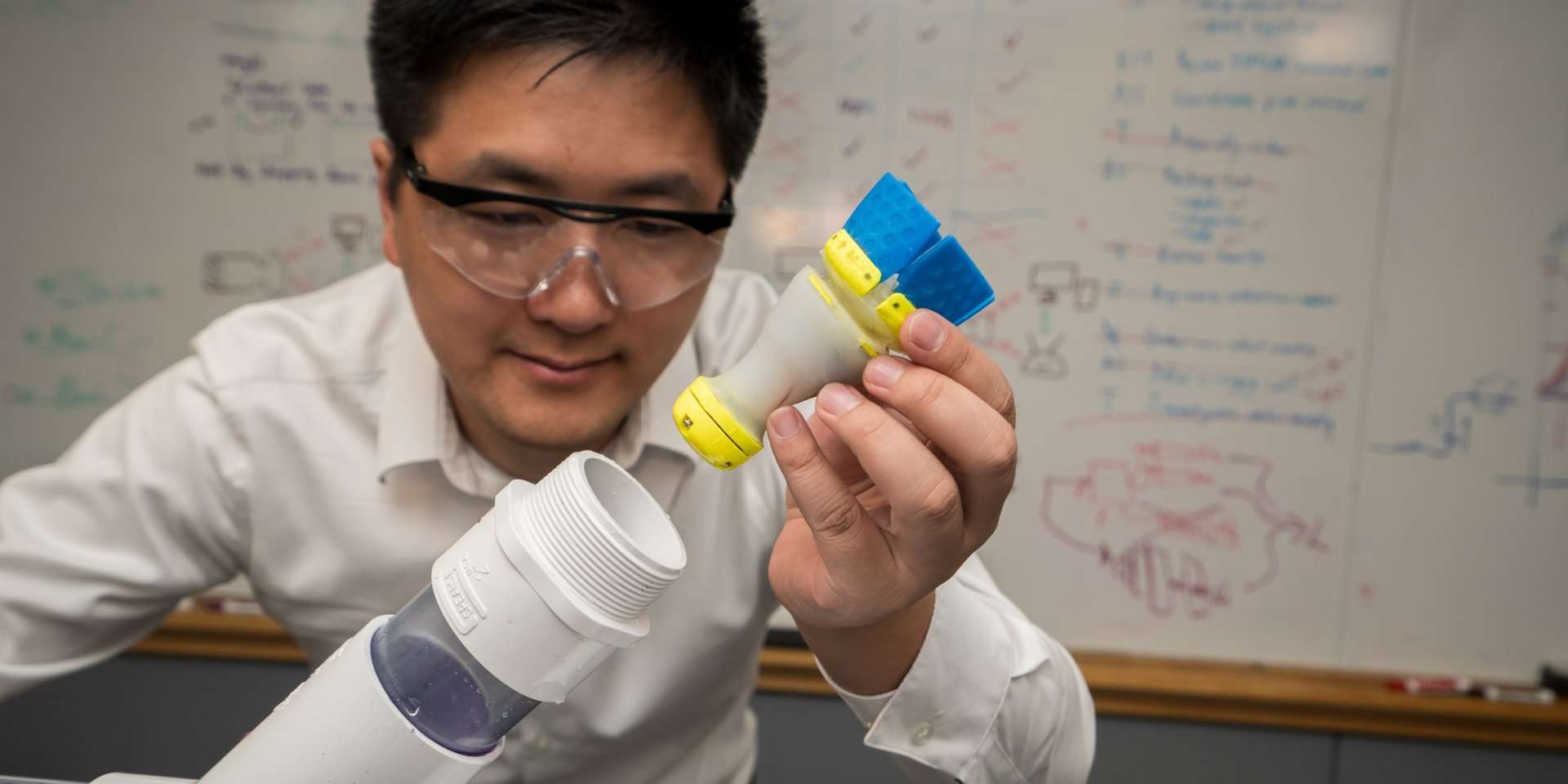When You Wu was growing up in China, officials would shut off water to his community for half a day each week in the name of conservation. The experience contributed to Wu's interest in water scarcity, which he chose to study more in-depth after moving to the United States 10 years ago.
The Massachusetts Institute of Technology graduate, now 28, has developed a robot to find leaks in water pipes. As the robot moves with the water through a pipe, its "hands" touch the pipe and feel the suction forces caused by leaks, Wu told Business Insider.
It took Wu five years to create a working prototype. The current version, Lighthouse, was released in January, shortly after Wu was named to Forbes' 2018 "30 Under 30" list for manufacturing and industry. Wu and his college friend Tyler Mantel are now working to grow their business — WatchTower Robotics, which they founded in June — with support from the Techstars Sustainability Accelerator.
The American Society of Civil Engineers' 2017 "Infrastructure Report Card" estimates that there are 240,000 water-main breaks in the United States each year, equivalent to wasting more than 2 trillion gallons of treated drinking water annually. About 20% of clean water worldwide is lost daily, according to WatchTower Robotics.
Many leak-detection methods are available on the market, but these options rely on listening to sounds caused by pipe vibrations and pressure reduction. Focusing on acoustics does not work well in cities because of noise levels, Wu said, adding that his Lighthouse robot is effective in both cities and suburban areas.
The robot is designed to inspect pipes without interrupting the water service, and it can be put into pipes in hydrants and in three-way junctions. From there, an analytics system creates a map that tells pipe operators where the leaks are, how large they are, and what the probability of catastrophic failure is.
So far, the robots have been tested in Saudi Arabia, Virginia, and the United Kingdom. WatchTower Robotics is also conducting pilot programs in Massachusetts with the Cambridge Water Department and in Australia with the pipeline-service company Detection Services.
Wu's Lighthouse was also recently named the national winner of the James Dyson Award, an international design competition.
"My eventual goal is to put our robotic tools into the hands of field technicians in every single city around the world, so that every single city in the world can have less water loss due to leaks and support more population growth," Wu said.

nagsnyder on September 6th, 2018 at 16:35 UTC »
Yeah, only problem is in Pittsburgh they don't even know where the pipes are until a water main breaks and they shut a street down. We are at a 60% waste level from leaky pipes throughout the city. My water bills are about $50-$70 a month, and we only use half of the water but are still charged for it. And now our Water Authority is so poor they might have to contract/sell-out to a private entity. Infrastructure is such an enormous and overlooked problem in America, especially the older rustbelt cities.
redditISorwellian on September 6th, 2018 at 16:17 UTC »
THe same two MIT grads that did something with telling me what wine i like?
CUK4CoCoPuffs on September 6th, 2018 at 14:57 UTC »
Detecting leaks wasn't the problem where I grew up. It was fixing them.
The water for the borough came from a spring. The water lines were old as fuck and they knew they were leaking a lot.
Up until about 2006, water was not charged as a utility. Which seems crazy but w/e, it was a nice little bonus for living in an otherwise semi shitty town.
Around that time, they released this report stating how much water was being leaked and how they needed to start charging for water usage to pay for the repairs. They invaded everyone's homes and put in water meters and started charging.
Also around this time, they started selling the spring water to a neighboring township. Meaning they ran new lines piecemeal over the next few years to expand their service.
None of that sounds too bad right? Well, not one of the original leaks has ever been fucking repaired. Prices go up seemingly year over year, they expand to service new developments year over year, but they can't even fix the lines that surely have gotten worse in the past decade.